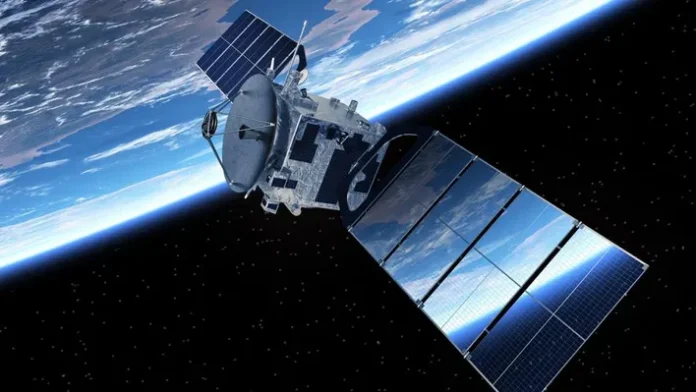The evolution of cloud computing has transformed industries across the globe, enabling faster data processing, greater accessibility, and the ability to scale operations without the limitations of physical infrastructure. However, cloud space technologies are now taking cloud computing to the next frontier: space. With advancements in satellite technologies, space-based infrastructure, and digital solutions designed to operate beyond Earth’s atmosphere, cloud space technologies are bridging the gap between Earth and the cosmos in ways we never thought possible.
In this article, we’ll explore how cloud space technologies are revolutionizing industries and what the future holds for these innovations.
What Are Cloud Space Technologies?
Cloud space technologies involve cloud computing services and space-based technologies working together to bring digital solutions to the cosmos. Essentially, it’s the integration of cloud computing with space exploration, enabling satellites, space stations, and other space infrastructure to send data to cloud platforms. These platforms store, process, and analyze data, making it accessible to users on Earth in real-time.
Cloud space technologies combine:
- Cloud Computing: Providing scalable, on-demand access to computing resources like storage, processing power, and applications.
- Space Infrastructure: Satellites, space stations, and other celestial structures that gather data from space.
- Advanced Communication Networks: Using high-speed data transfer to send information between space and Earth’s cloud networks.
Key Benefits of Cloud Space Technologies
Cloud space technologies offer many advantages, particularly for industries reliant on real-time data and global connectivity. Here’s how they are transforming our digital ecosystem:
1. Real-Time Data Access from Space
One of the most significant breakthroughs of cloud space technology is the ability to access real-time data collected from satellites, space stations, and other space-based infrastructure. This enables:
- Faster decision-making: Whether monitoring climate patterns, managing agricultural projects, or predicting weather events, real-time access to space data allows industries to make informed, timely decisions.
- Improved satellite communications: Cloud space technologies enhance the bandwidth and speed of satellite communications, allowing high-resolution imagery, video feeds, and data transmissions from space to Earth without delay.
2. Cost-Efficiency and Scalability
Building traditional infrastructure for satellite data storage and processing on Earth can be expensive and resource-intensive. Cloud space technologies make space exploration and satellite data much more accessible by offering:
- Scalable resources: Cloud platforms like Amazon Web Services (AWS), Google Cloud, and Microsoft Azure can host and process large amounts of space data without needing massive physical infrastructure.
- Cost-effective storage: Instead of managing huge data centers, space agencies and companies can leverage cloud storage services, making the process of gathering, analyzing, and storing space-based data more affordable.
3. Enhanced Collaboration and Connectivity
Cloud space technologies are encouraging collaborative innovation by providing a platform where different organizations, scientists, and government agencies can access, share, and analyze data. For instance, the International Space Station (ISS) generates vast amounts of scientific data, which can be uploaded directly to cloud systems for use by researchers worldwide. This promotes:
- Global collaboration: With cloud technologies, data from space is available to research organizations and businesses across borders.
- Easier data sharing: Information can be shared with minimal latency, fostering collaboration between governments, private companies, and international agencies.
4. Advanced AI and Machine Learning in Space Operations
Cloud space technologies also open the door for artificial intelligence (AI) and machine learning (ML) to be integrated into space exploration. By processing data in the cloud, these technologies enable:
- Predictive analytics: AI models can analyze space data and forecast weather conditions, satellite trajectory, or potential space weather disruptions.
- Autonomous operations: AI-powered systems can automate satellite maintenance, detect anomalies, and even help with resource allocation for missions to other planets.
Applications of Cloud Space Technologies
The practical applications of cloud space technologies are vast and continuously expanding. Below are some industries and sectors where these technologies are making a significant impact:
1. Earth Observation and Environmental Monitoring
Satellites continuously collect data on Earth’s atmosphere, oceans, and landmasses. With cloud space technologies, environmental scientists and agencies can quickly analyze this data to monitor:
- Climate change and its impact on different regions.
- Deforestation, pollution, and natural disasters, enabling quicker responses to emergencies.
- Agriculture: Farmers can use satellite data stored in the cloud to monitor crops, assess land conditions, and optimize yield production.
2. Space Exploration
Cloud space technologies are helping space agencies like NASA, ESA, and private companies like SpaceX manage the massive amounts of data generated by space missions. They allow for:
- Seamless communication between Earth-based stations and spacecraft.
- Mission-critical data storage and retrieval, ensuring vital information is available in real-time.
- Support for extraterrestrial exploration: Cloud computing supports complex simulations and calculations for missions to Mars, the Moon, and beyond.
3. Telecommunications and Internet Access
Cloud space technologies are pivotal in delivering global satellite internet access. Companies like Starlink (by SpaceX) and OneWeb are using low Earth orbit (LEO) satellites to provide high-speed internet in remote and underserved areas. These systems rely on cloud-based platforms to:
- Manage and monitor the network of satellites.
- Distribute high-quality internet to users across vast geographical areas.
- Integrate AI and data analytics to optimize network performance.
4. Security and Defense
Cloud space technologies also play an essential role in national security and space defense by providing:
- Real-time satellite surveillance and reconnaissance.
- Cloud-based platforms that track and manage space debris and satellites, which are crucial for maintaining space security.
Challenges and the Road Ahead
While cloud space technologies are already making a profound impact, there are still challenges that must be overcome:
- Data privacy and security: Given the sensitive nature of space data, ensuring secure transmissions and preventing unauthorized access will be paramount.
- Bandwidth limitations: Transmitting large amounts of data from space can strain current communication systems. As the volume of data increases, solutions must evolve to support faster and more reliable transmissions.
- Cost of deployment: While cloud space technologies reduce costs, launching and maintaining the infrastructure for these systems is still expensive.
Despite these challenges, the future of cloud space technologies holds immense potential. As advancements in satellite communications, AI, and data storage continue to grow, the gap between Earth and space will continue to shrink. These innovations will help create a more connected, data-driven world, where both terrestrial and celestial systems work together to enhance our understanding of the universe.
Final Thoughts
Cloud space technologies are not just the next step in digital and space exploration—they’re a revolutionary leap in how we connect with and explore the cosmos. Whether it’s in enhancing Earth-based environmental monitoring, enabling real-time space exploration data, or bringing global internet access to remote areas, these technologies will play a critical role in shaping our future.



